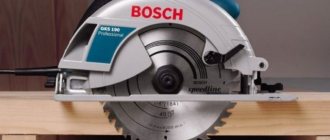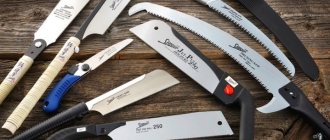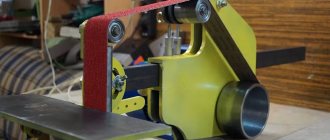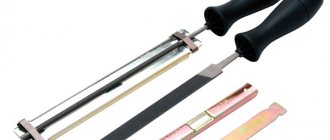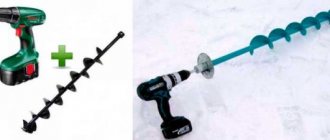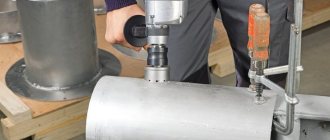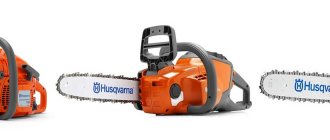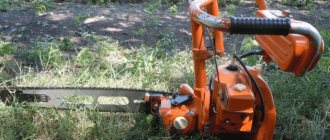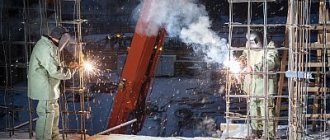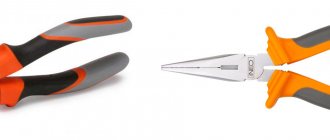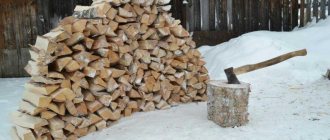There are many jobs where you can't do without a circular saw. But this alone will not be enough; you need a high-quality saw blade. With proper use, a good cutting part will serve the owner for a long time and will ensure comfortable use of the tool. Depending on your goals and objectives, you need to have an assortment of equipment of the required sizes and other requirements. In this article we will briefly look at the types of saw blades, what you should pay attention to when choosing.
Purpose
Depending on the type of disk, the following can be processed:
- wood of various species;
- wood products - chipboard sheets, OSB, plywood, laminated flooring and other similar materials;
- polymeric substances and products made from them, for example, organic glass, polystyrene;
- natural stone material, such as marble;
- soft metals – aluminum, copper alloys;
- products based on iron alloys - pipes, corrugated sheets, etc.
A cutting tool has certain characteristics, parameters, dimensions, purpose, and properties of the material from which it is made.
Basic parameters of a circular saw blade
Outer (external) diameter
It is determined by the internal size of the protective casing - a blade with a larger diameter will not fit on a saw with smaller casing dimensions. The main dimensions of cutting tools for hand-held circular saws are in the range of 130-250 mm. The outer diameter does not have a significant effect on the cutting speed, but determines the cutting depth. As the cut increases, the engine is significantly loaded, and the metal of the disk and the workpiece itself are heated.
Internal, landing diameter
It has several sizes: 16, 20, 22, 30, 32. An important parameter is that the diameter must correspond to the size of the power shaft on the saw for which the blade is selected. Some disk models have additional holes that secure the disk to pins.
Number of teeth on the disc
Affects parameters such as cutting speed and processing cleanliness. With a decrease in the number of teeth, the processing speed increases, the conditions for chip removal improve, but the cleanliness of the cut deteriorates. As the number of teeth increases, the cut becomes cleaner, but the load on the engine increases. Conventionally, according to their quantitative ratio, disks can be divided into three groups:
- a large number of incisors, in the range of 80-90 pieces;
- average quantity (40-80 pcs.);
- small quantity (10-40 teeth).
Discs with an average number of cutters are classified as the universal type. They can process soft and hard wood, make transverse and longitudinal cuts, and be used for processing various wood products.
Tooth inclination
Determined by the deviation of the cutting edge surface from the disk radius. When the deviation is towards the back side of the tooth, the inclination is called negative; when the inclination is on the reverse side, it is called positive. For longitudinal sawing, it is more advisable to use a tooth with a positive inclination, since during the processing process a kind of material capture occurs, the disk impacts the part, which contributes to faster cutting of the workpiece as a whole. The inclination of the tooth is divided into:
- standard tilt – the angle varies from 5° to 15°;
- positive, aggressive tilt is 15-20°;
- a typical negative angle ranges from 0° to -5°.
Tooth configuration
Each type of cutter is designed and manufactured to solve a specific task. Subdivided:
- Flat cutter - used for fast longitudinal cutting of soft or hard wood, designated FT.
- Replaceable cutter - has a sequentially alternating, replaceable inclination of the teeth in one direction or the other. The cutters give an even and fairly clean cut. Used for cross and longitudinal cutting of wood, processing plywood, OSB, chipboard and composite boards, indicated by the ATB symbol.
- A combination cutter is a sequential change of groups from a combination of four replaceable cutters (ATB) and one flat cutter (FT). Designated as Combi. This type of disc is considered universal due to its ability to perform different types of cuts.
- Trapezoidal flat cutter - made of successive flat teeth. The higher one is designed as a trapezoid, the lower one is flat. It is used for processing wood and products made from it, for polymer materials and soft non-ferrous metals. Designated TCG.
- Replaceable cutter with large beveled side - designed for processing materials prone to splintering, as well as for finishing crosscuts. Denoted HiATB.
Disc thickness
Determines the actual cutting width. The standard size is 3.2 mm. In addition, the thickness of the disc affects the strength of the cutting tool itself. Reducing the parameter leads to heavy operating conditions, overheating of the disk and failure. A larger size causes increased consumption of the processed material, that is, “translation into chips.”
Circular saws are used in processing various materials. Accordingly, the cutting tool is designed for specific tasks.
Marking
As you can see in the picture, the markings of the disc can tell about many technical properties. But there is a dependence that should not be ignored: the shape of the teeth directly affects the ability to work with a certain material.
The systematization developed by representatives of the GASS brand divides discs into the following categories according to the shape of the teeth:
GK and GS: alternately beveled. Suitable for processing all types of wood and “clean” chipboards, without plywood and plastic coatings.
GM: straight. They can only cope with cutting soft wood.
GT: trapezoidal. They will be needed in cases where it is necessary to cut MDF or chipboard with lamination.
GR: conical. Cuts multi-layer coatings with double lamination.
GA: trapezoidal and straight. Same abilities as GT.
Types of circular saw blades
Monolithic disk. They are made of high-quality high-carbon or high-speed steel. They are used for processing wood and products made from it, as well as for cutting polymer products. They have a number of advantages:
- inexpensive;
- simple sharpening of teeth - you can perform this operation yourself, without the presence of complex special devices;
- They are sharpened many times, therefore, they have a fairly long service life.
A disc with teeth that are reinforced with carbide brazing. The blade is made of durable tool steel. Brazing is steel alloys with a high content of tungsten or cobalt carbides. Thanks to this solution, these disks have become the most common. They have a number of advantages:
- allow cutting most of the known materials;
- no need to set the teeth;
- durable and reliable during operation;
- the service life from sharpening to sharpening is several times higher compared to a monolithic disc;
- give a cleaner cut;
- increase cutting speed;
- are produced in a wide range to solve all kinds of problems when sawing materials.
However, there is a significant drawback - such discs are relatively expensive and require special equipment for sharpening.
Important Features
So that readers do not get lost in the wilds of the modern market for accessories for circular saws, we have prepared 5 main criteria that will help make their choice. Let's look at them in order of importance.
Disc thickness
The standard parameter is 3.2 mm. The thinner the disk, the more it heats up and the faster it fails. The large thickness guarantees a long service life of the equipment, but slows down the work. In this case, the excess consumption of material increases due to the wide cut.
Circular saws for wood
A circular saw is a rotating cutting tool in the shape of a round blade with an abundance of cutting teeth around the perimeter, which is designed for mechanical cutting of wood and wood-based materials.
The circular saw is made of alloy tool steel, with heat treatment, leveling, calibration, setting and sharpening.
- Material: The circular saw is made of 75Cr1 steel. (DIN 1.2003); (ČSN 19418)
heat treatment: The circular saw is hardened to 44-48 HRc for body thickness up to 3 mm and to 42-46 HRc for body thickness over 3 mm.
- leveling: When leveling a circular saw, differences in the flatness of the surface are eliminated, i.e. so that the axial (face) runout of the circular saw does not exceed:
- values 0.2 mm for circular saws with a diameter of up to 200 mm
- values 0.4 mm for circular saws with a diameter of up to 500 mm
- values 0.6 mm for circular saws with a diameter of up to 800 mm
- values 0.8 mm for circular saws with a diameter greater than 800 mm
- sharpening: For sharpening circular saws, we can recommend a grinding wheel made of snow-white or grayish corundum, medium grain size and hardness, with a porous or very porous structure with a clay or bakelite base. A circle with clay binder material is designated:
- A99 60L 9V (snow white)
- A96 60L 9V (grayish)
- Overheating of cutting inserts: manifested by a change in the color of the tips of the cutting inserts, which occurs due to overheating of the material during sharpening. Overheating can occur due to very enormous pressure (removal of a huge amount of material) of the grinding wheel on the surface being sharpened, due to the introduction of a very hard grinding wheel, very small grain size of the grinding wheel, incorrect fastening of the tool, or intense sharpening without cooling.
The runout of the circular saw changes when clamped near the mounting hole, and you need to pay attention to the quality of the clamping flanges, which must have a diameter of at least 5x√D of the saw.
calibration: By properly adjusting the preparatory load, the strength of the circular saws is increased, which makes it possible to increase the feed rate and thus improve the cutting accuracy and quality of the cut surface. During manufacturing, circular saw blades are calibrated for a cutting speed of 60 m/sec for the smallest thickness and 80 m/sec for the thickest circular saw blade. Proper speed at which you saw
calibrated, indicated on the circular saw.
routing: The amount of routing (on one side) is usually 1/4 of the thickness of the disk body. Only the upper third of the tooth is moved apart. The wiring must be symmetrical, otherwise a circular saw
begins to deviate towards a larger distribution.
The layout is always done before sharpening; after sharpening it is only controlled and corrected if necessary. When using a very small setting, the circular saw overheats, loses strength and moves to the side. With an extremely large setting, losses appear from a very wide cut, greater energy consumption and increased roughness of the cut surface. For soft wood we choose a larger layout than for hard wood. For longitudinal cutting we choose a larger layout than for cross cutting. For wet wood we choose a larger layout than for dry wood. For a frozen tree, we choose a smaller layout than for an unfrozen tree. If the machine is in poor condition, we choose a huge layout.
The most common reasons for short sharpening times:
Sources:
https://e-1.com.ua/catalog/display/category/1/subcategory/7 https://instrument16.ru/instrument/pily/marka-stali-diskovoj-pily-po-derevu.html https: //www.pilana.com/ru/tekhnicheskaya-informatsiya-dlya-diskovykh-pil-iz-instrumentalnoy-stali
Recommendations for choosing a disk
When choosing a blade, you must take into account the technical parameters of the circular saw:
- engine power;
- maximum speed;
- mounting size on the motor shaft;
- inner diameter of the protective casing.
The engine power affects the type of disk - a negative angle, a large number of teeth create a large load on the engine, which will have to work in “peak” mode.
The number of revolutions or spindle rotation speed is interconnected with certain disk sizes that the manufacturer recommends. Installing a cutting tool deviating from the recommended ones can lead to abnormal operation, resulting in possible breakage of the disk, saw and damage to the material being processed.
The mounting dimensions of the disk (inner diameter) and the corresponding one on the motor shaft must match, otherwise the tool cannot be installed on the saw.
The external size of the disk cannot exceed the internal size of the casing - if this parameter is violated, the tool will not be installed on the saw.
The type of disk is influenced by a number of factors:
- type of work performed, material processed;
- device, design of cutting tool;
- number of teeth, their design.
Work performed and material processed. Since different discs are produced, it is necessary to decide on the types of operations (what types of cuts will be carried out), and also take into account what the cutting tool will process.
Depending on the type of operation and material, the type of disk is selected: monolithic or with carbide tips.
The processing mode and type of material determine the number of teeth, their type and inclination. The most popular is the average number of teeth with trapezoidal sharpening with a positive angle.
How to sharpen?
Just like another tool, a saw
needs timely care. The most crucial moment is sharpening the circular saw blades. Experts note that the carbide tooth wears out along the main top edge; if massive workpieces are sawed, then the side edges also wear out quickly. The saw should not be allowed to become too dull, as it will be less productive, and it is not a fact that the discs can be sharpened.
READ Is it possible to saw boards with a jigsaw?
Proper sharpening involves simultaneously ensuring the proper sharpness of the cutting edge. If you sharpen them along one front plane, the number of sharpenings will be less. Many owners of similar tools are interested in how to sharpen a circular saw blade. This varies depending on the material of the teeth. Sharpening is almost always done on a wheel made of CBN, also called green carbide, otherwise based on diamond wheels. It is advisable to use CBN wheels when sharpening saws made of high-speed steel, and diamond wheels for sharpening cutters made of hard alloys. To sharpen quickly, but have less impact on the degree of wear, it is worth choosing diamond wheels with a larger grain size.
For sharpening, machines that have different functionality are also used. The most complex and expensive models provide automatic sharpening. When sharpening, you should separate the teeth: if this is done incorrectly, then during the cutting process there will be a burning smell, extraneous noise, and the material itself will move jerkily, which is not very comfortable.
You should constantly monitor the condition of the disks, since their wear will increase the load on the mechanisms and at some point lead to complete wear. Thanks to constant sharpening, it is natural to extend the life of the equipment, improve productivity and reduce the time for the cutting process. If after sharpening the cut remains sloppy and the material moves unevenly, then you should pay more than just attention to the location of the teeth.
How to choose saw blades? This is easy to do if you follow a few rules:
- Find out the diameter of the mounting hole and the outer diameter of the blade on the label - you need to meet the requirements of the features of your saw.
- Pay attention to the thickness of the disc: thin ones provide a good and clean cut and are used when working with valuable types of wood, while thick ones are advisable to use for preparatory cutting of materials.
- The disk will indicate what the very permissible number of revolutions is. A low speed of revolutions will allow you to develop a higher cutting speed, but will lead to deformation of the disk and a poor saw.
- Evaluate the quality of the saw blade: if it is good, then the cutting plane will be smooth, without roughness or imperfections.
B – pay attention to safety and choose saw blades that are designed for a specific type of saw. And additionally, think about where to sharpen the circular saw blade if you are not able to do this at home.
Disc quality
There are several signs by which you can almost accurately determine whether a product is of high quality or poorly made:
- The disc must be marked, and the inscription must be applied using a laser tool and not with paint.
- The blade must be subjected to a grinding and polishing procedure - the purity of the processing can be seen by looking at it if you “play” with the disc in the light.
- The cutting tool disk is subjected to balancing and calibration procedures - the operation is roughly reminiscent of balancing a car wheel. After such treatment, the cutting tool will not “beat” and there will be no vibration during operation.
- To compensate for possible temperature expansions, special slots are made on the disk, ending with small relief holes.
- Some manufacturers reinforce the disc with several circular stiffening rings.
- Another indicator of quality is the name of the manufacturer, its trademark. Today these are European, American, South Asian, Russian and Chinese manufacturers (listed in descending order of quality). By the way, some Russian manufacturers produce products comparable in some respects to European or American ones.
In general, choosing the right circular saw blade is almost a science. If you have no experience, then it is better to seek advice from professionals, especially those who have had the experience of working with a circular saw for at least 2-3 years.
Video about replacing a circular saw blade.
Related articles:
- Adjusting the carburetor of a chainsaw The carburetor is one of the components in the fuel supply system in an internal combustion engine. It is designed to form a mixture of fuel and air with adjustable supply into the chambers [...]
- Adjusting a chainsaw A chainsaw is a hand-held tool designed to work with wooden material. It is equipped with a gasoline internal combustion engine. It is a complex structural device. IN […]
- Attachments for mini-tractors A mini-tractor in agriculture is an indispensable friend and assistant. He has to cope with all sorts of jobs: digging up the soil, applying fertilizers, and spraying […]
- How to sharpen a chainsaw chain A saw chain is a cutting tool designed for cutting wood. It consists of sequentially located sharpened links connected by […]
What is a saw blade and how is it made?
A saw blade is a tool for a circular saw , which is used for cutting workpieces made of various materials. The main material for the production of the disc is chrome vanadium steel or high-speed steel. Molybdenum and tungsten are added to the metal composition of such disks, which give them the required strength. Such discs are marked CV or HSS.
There are circular saw blades with diamond sectors, which are attached to the main part using laser welding. Such products are distinguished by their highest strength and the ability to use them for cutting strong materials, such as concrete or stone. The disc is made in different thicknesses, from 0.7 to 4.5.8 mm, it all depends on how correctly you can choose the studio, how thick the cut needs to be made. Different models of discs have different teeth in shape, length, angle of inclination and type of setting. In most cases, the following types of teeth are used:
- Trapezoidal
- Divorced
- Multidirectional
- With straight side profile
